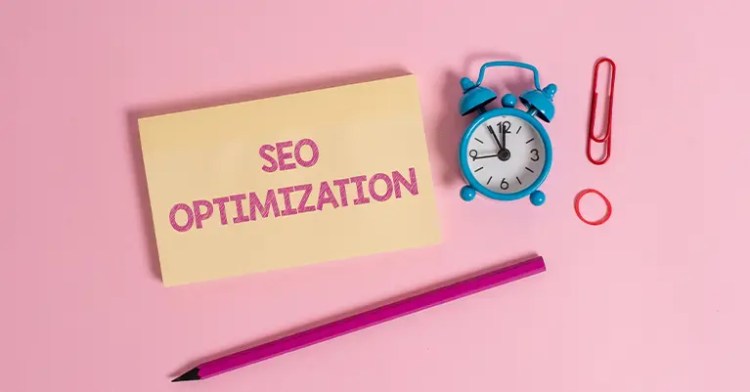Whether you are a business owner or a digital marketer, odds are that you’ve noticed the importance of strong, high-quality content. This is true no matter your industry. Content is the one element that converts users and improves your ROI. However, strong content is nothing without a firm understanding of the SEO basics.
If you are unsure of how to apply SEO techniques, then your content will never have a chance to work its wonders. Furthermore, it takes time to become an SEO wizard, so you should take the time to learn the SEO basics for content writing. The following collection of ideas and practices will provide you with all the valuable information you need to begin this journey.
What is SEO writing?
First and foremost, you should know what you are about to take on regarding SEO writing. SEO writing is a style of writing geared towards creating content that will attract the attention of search engines via targeted keywords and keyword phrases.

Why is Their Attention So Important?
When a search engine reviews your website, post, or blog, it determines whether it is of value to users. More valuable content will rank higher on search engine result pages (SERP) and less meaningful content will earn a lower ranking. This will contribute to the overall success in achieving your goals because most people tend to select results from the upper portion of the first page. In short, your site will earn more traffic if it ranks high.
Search engines point people to your website if you know how to employ basic SEO strategies and tactics effectively. To accomplish this goal, you need to create content that is SEO-friendly.
Some of the basic SEO tactics you need to master include the following:
- Keywords
- Meta-data
- Links to other pages
- High-quality content
- Content structure
- Visual Appeal
Here is a quick rundown of each of the above mentioned SEO basic elements in greater detail.
1.) Keywords – aka the King of SEO
When it comes to the world of SEO basic, keywords are king. Why? Because without effective keywords, your SEO efforts will have little to no effect. Sadly, this process is quite a bit more difficult than it may appear at first glance.
The first step is to select the right keywords for your website or blog. Try using Google’s Keyword Planner and try out a few keywords and key phrases and see how they perform. The Google Keyword Planner will help you accomplish the following two objectives:
- Determine the volume of searches for a specific keyword(s)
- Determine the level of competition for a specific keyword(s)
You should aim for keywords or key phrases with the highest search volume and lowest possible competition.
It is important to incorporate your keywords or key phrases into your text as naturally as possible. This is critical since the search engines are pretty smart. One thing that they look for is an outdated practice called keyword stuffing. This is the lame tactic of simply overusing, or ‘stuffing’, your written content with the core keyword as many times as possible. Remember that it is crucial that you prioritize the quality of your content, or readability, above all else…even before the effectiveness of SEO target keyword(s).
The ratio of keyword/key phrase to total word count is also an important element to take into account. However, there is no official formula for keyword frequency, but 2-5% seems to be an effective target to aim for when it comes to keyword density.
2.) Formatting Meta-Tags
Meta-tags are how you establish a line of communication between your site and the search engines. They are words that are tucked into the code and give search engines an idea of what your content is about.

Meta-tags consist of three core components:
Title Tag
The title tag is an HTML element that specifies the title of a web page. They are displayed on search engine result pages (SERPs) as the clickable headline for a given result. They play an important role in overall usability, SEO and social sharing. Meta title tags are typically 55-65 words long and are a great place to incorporate your long tail keywords.
Meta-Description Tag
This is where you’ll find the site’s summary. You should aim to keep this under 160 characters at most.
Meta-Keywords Tag
This where you add the keywords that you’ve used throughout your page or post.
When search engines interpret your tags, they determine if the description, title, and keywords are related to the content.
3.) Include Useful Links to Internal and External Content

Linking to other pages is an essential component for any basic SEO expert. Doing so will provide readers with additional information and will help clear up any potential doubters. Links also play a role when it comes to how the search engines perceive your content.
There are two types of linking that you should aim to include in your content:
- Internal Links
- External Links
Internal links, or inbound links, are links that take users to other pieces of content throughout your website. Any page you link to should be closely related to the topic of the page from which you are linking. For instance if the current post is about baking cookies, you could easily link to a post about the differences between liquid and dry measurement techniques. Internal links are a great way to keep users engaged with your website longer.
External links, on the other hand, direct users to another reputable page on an external website. Make sure that any page you link to provides trustworthy and helpful content. Linking to low-quality pages can hurt your SEO strategy in the long-run.
Just like incorporating keywords into your content, your internal and external links should naturally flow with your content. In other words, they shouldn’t stick out like a sore thumb.
4.) Only Publish High-Quality Content
All search engines strive to provide a positive user experience (UX). On that note, you shouldn’t publish content just for the sake of publishing content. Doing so could very well hinder your overall SEO efforts.
Here are a few characteristics of high-quality content:
- Include valuable information
- Cover relevant topics to your niche
- Include topics that people care about
- Provide practical advice
- Add data & statistics from credible resources (if it applies!)
One more characteristic of effective practice when it comes to SEO writing, better yet, just writing in general, is editing and proofreading your work.
As mentioned earlier, your content needs to be reader friendly. This takes priority over SEO friendliness every time. Avoid using complex words and phrases at all costs. Think about it this way, every piece of content should aim to be a conversation.
It is also essential to keep in mind that search engines also keep track of bounce rates. Your bounce rate is calculated by the number of users who enter your website and then divided by the number of visitors who then exit your site having only viewed on page.
That being said, you need to provide content that will enhance the user experience. If you accomplish this task, then the search engines will also notice your content.
5.) Pay Attention to Your Structure

The vast majority of readers will quickly skim a page before they decide if they will read the full page. Readers will likely run away from your content if they see an endless sea of paragraph font text. This in turn will increase your bounce rate. However, you can prevent this from happening if you take the time to include meaningful headers to divide your content into smaller workable chunks of text. This by far a much more appealing find for readers.
A few other tactics to create reader-friendly content include, but are not limited to:
- Headings
- Subheadings
- Bold titles
- Short Paragraphs (2-4 sentences)
- Logical Structure
- Bullet and numbered lists
In short, design your content with these tips in mind. Doing so will help you create content that is both coherent and comprehensive.
6.) Publish Content that’s the Right Length
Disclaimer: the length of your content totally depends on the topic of your post.
There is ample reason to say that search engines do favor longer posts and articles. However, that doesn’t mean that you need to write pages upon pages of content. What it means is that you need to cover the topic in enough depth and breadth to signal to search engines that you are serious about providing value to users.
As mentioned above, the length of your content most certainly varies depending on the topic of your post. However, try to aim for around 1,500 to 2,000 words. This is enough to cover the topic in enough depth, yet doesn’t bore the readers to death.
The minimum length of any post should be around 400-500 words. Why? Odds are that you cannot cover a topic in enough depth in less than 400 words.
Lastly, please note that these limitations refer to articles and blog posts. Social media posts and website descriptions should be concise and to the point.
7.) Enhance Your Content with Visuals
First and foremost, any and all content should be crafted with the audience in mind first and then for search engines. What does that mean? Well few will tolerate your content if it is just a bunch of gibberish, yet SEO friendly. One way to enhance the user experience is to include visuals and other form of media. Doing so will make your content more appealing and user friendly. This will also improve your SEO rankings.
Here are some of the best strategies that will help you with this part:
- Include on-page images and add word-rich image titles. When people do a search for that keyword, your image title will lead them to your page.
- Use alt-image text. They are great for optimizing keywords that you target.
- Opt for images that have small file sizes. If the file sizes are too large they will slow down your website and chase the users away.
- Add infographics with descriptive text. Both search engines and people love infographics because they are full of useful information. However, the search engines see them just as images so a description will clarify what information they provide.
- Use videos. Not only are they entertaining for the users, but the search engines recognize them as high-quality content.
With these tips, your content will be optimized and the visuals will leave a lasting effect on the users.
Closing Thoughts
The correct SEO strategy will provide you with all the necessary tools to keep your audience engaged and search engines satisfied with your website. The real question, however, is whether you are ready to see the power of effective content writing. If so, these basic tips are the perfect place to start. If you’re not quite ready to rely on your own skills just yet, I’d recommend giving the Yoast plugin a shot. This handy plugin helps guide you through the process of crafting refined content that both reader and search engines will simply devour.




